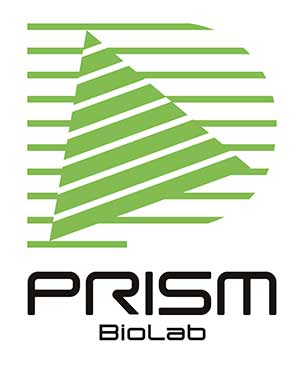Published on: April 26, 2023
This review1) summarizes the recent status of peptide-based therapeutics research in the discovery stage and peptide related technologies in a simple fashion. It helps scientist in a variety of levels to achieve better understanding of peptide drug discovery issues as well.
Peptides are among the classical and ubiquitous chemical types in the small-molecule world. Distinct and attractive nature of peptides is highlighted by the moderate to high potency, target specificity, less toxicity and storability.
Synthetic utility is also the fascinating: diverse technologies like automatic synthesis, flow synthesis and DNA-encoded libraries are readily available these days.
As one of the leading companies of peptidomimetics, recent updates in the peptide field is of great interest in PRISM Biolab.
You would think peptides are fascinating by looking at the coverage of disease fields of these approved drugs.
The top 5 are Infection (17), anticancer (16), diagnostic agents (15), cardiovascular diseases (11) and diabetes (9). Obviously, peptide-based therapeutics are becoming remedies in the intensively investigated and challenged disease areas. According to this literature1), 47 clinical trials were on-going at the stage of Jul., 2022.
However, peptide drugs cover only 6% of the FDA-approved therapeutics (approved from Jan., 1940~Jul., 2022)1). As mentioned in other articles, peptides have limitations in drug development. The crucial issue for delivering widely available and preferred therapeutics is that poor metabolic stability and membrane permeability hampers the oral administration of natural peptide-based drugs.
In order to overcome the limitation and control the chemical and pharmacological nature of peptide therapeutics, numerous technologies and approaches have been developed so far.
Replacement of labile amide bonds2), backbone modifications3), N-alkylation4), cyclic peptide synthesis5) are a kind of “established” synthetic methodologies. However, the trial-and-error-based synthesis and profile tests is a huge barrier for concise and rapid lead optimization.
How attractive it would be to have a peptidomimetic molecule not only with high potency and selectivity but also with metabolic stability and membrane permeability!
Advance of peptide drugs will provide a new opportunity for peptide mimetic small molecules, including our PepMetics®. Once the mechanism is confirmed with peptides, PepMetics®, which mimic the sequence of key interactions, have a potential to act in the same as the parent.
Limitations and issues will be surmounted or circumvented by sophisticated technologies. Reading this review would be a “catalyst” to open up your mind.
We are always welcome to have a scientific discussion and appreciate your collaboration to deliver novel drugs to patients with high useability.
1) https://doi.org/10.1016/j.drudis.2022.103464
2) https://doi.org/10.1039/C3CS60384A
3) https://doi.org/10.1039/D1QO00892G
4) https://doi.org/10.1021/ar8000603
5) https://doi.org/10.1021/acs.chemrev.8b00657

